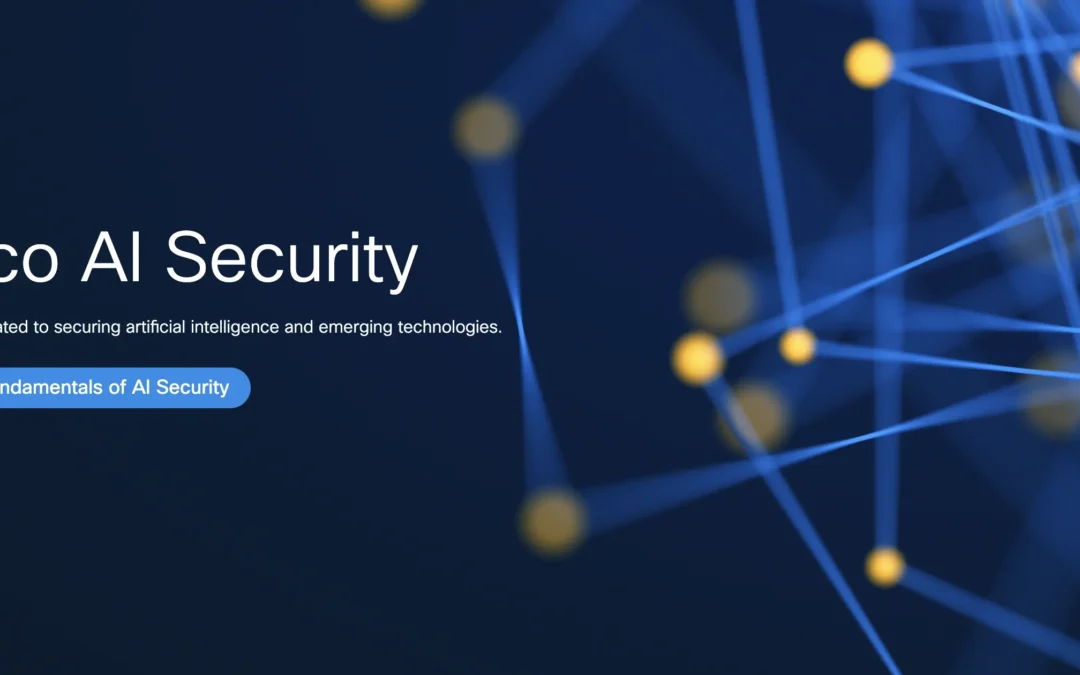Introduction: A New Era for Cybersecurity Careers
Artificial intelligence is rewriting the rules of cybersecurity — and nowhere is that change more visible than in entry-level roles.
In Cisco’s Learn with Cisco video, “How Generative AI Is Changing Entry-Level Cybersecurity Roles”, experts explain how generative AI is automating tasks, creating new responsibilities, and redefining what it means to start a cybersecurity career.
For students, job seekers, and early-career professionals, understanding these changes is crucial to stay competitive in the cybersecurity job market.
Why Generative AI Matters in Cybersecurity
Generative AI tools like ChatGPT, Copilot, and custom LLMs are now being integrated into security operations centers (SOCs) to analyze threats, summarize reports, and detect anomalies.
According to Cisco and Indeed experts, this shift is creating “AI-augmented analysts” — professionals who combine human judgment with machine intelligence.
The result?
Entry-level cybersecurity jobs are becoming more strategic, analytical, and collaborative.
1. Automation Is Changing Entry-Level Tasks
Previously, junior analysts spent hours parsing logs, documenting incidents, or running repetitive scans. Now, AI can automate much of that work — freeing up human professionals to:
- Investigate complex threat patterns
- Validate AI-generated alerts
- Communicate findings to management
Generative AI doesn’t replace analysts — it elevates them. Entry-level employees are now AI supervisors, ensuring automation is accurate, ethical, and efficient.
2. New Skill Sets Are in Demand
The “AI wave” is reshaping what employers expect from entry-level cybersecurity hires.
Here’s what’s becoming essential:
| Skill Type | Description |
|---|---|
| AI Literacy | Understand how AI models make decisions, and where they can fail (bias, hallucination, etc.). |
| Data Analysis | Comfort with Python, log data, and visualization tools like Splunk or Power BI. |
| Prompt Engineering | Knowing how to write clear, precise prompts to guide AI tools effectively. |
| Ethical Awareness | Understanding AI’s limitations and privacy implications in cybersecurity. |
| Soft Skills | Communication, teamwork, and critical thinking — especially when reviewing AI-generated reports. |
Cisco emphasizes that the most successful cybersecurity professionals will blend technical fundamentals with AI fluency.
3. Roles Are Shifting from “Doers” to “Directors”
As generative AI handles more detection and documentation tasks, entry-level analysts are evolving into AI orchestrators — people who guide, monitor, and interpret machine-driven actions.
Instead of running commands, they design the logic behind automated playbooks, validate AI-generated incident reports, and fine-tune alert thresholds.
This is a fundamental mindset shift:
“The new entry-level cybersecurity professional is both a defender and a data-driven decision-maker.” — Cisco Learn Program
4. The Rise of Skills-Based Hiring
Companies like Cisco and Indeed report that employers are now focusing on skills-first hiring rather than rigid job titles.
This means recruiters care more about what you can do than what you studied.
To stand out, aspiring professionals should:
- Showcase projects using AI for security automation
- Highlight measurable outcomes (e.g., “Used Python to automate phishing detection, reducing false positives by 20%”)
- Use storytelling frameworks like the STAR method (Situation, Task, Action, Result) in resumes and interviews
5. Preparing for AI-Augmented Cybersecurity Careers
If you’re entering cybersecurity in 2025 and beyond, here’s how to prepare:
 Learn the Fundamentals
Networking, cloud security, incident response, and ethical hacking remain foundational.
 Get AI-Literate
Take Cisco’s AI learning modules or courses on AI for cybersecurity. Understand how tools like Cisco SecureX, Splunk AI, or Microsoft Copilot for Security are used in the field.
 Practice Prompting
Experiment with using generative AI for:
- Writing SOC reports
- Generating incident summaries
- Simulating phishing or malware analysis
 Build a Personal Project Portfolio
Publish GitHub projects or blog posts showcasing your AI + cybersecurity experiments. Recruiters love proof of skill over theory.
 Stay Ethical and Responsible
Understand AI’s limitations, especially around data privacy, bias, and security risks like model poisoning or prompt injection.
 6. Challenges Ahead
While AI offers new opportunities, it also brings new challenges:
- Overreliance on AI can weaken human judgment
- AI-generated false positives can overwhelm security teams
- Bias in data can lead to blind spots in detection systems
- Ethical issues — who is responsible when an AI makes a wrong call?
That’s why human oversight will always remain the backbone of cybersecurity.
The Future of Cybersecurity Jobs
In the coming years, cybersecurity roles will evolve into hybrid human-AI partnerships.
AI will:
- Detect threats faster
- Automate remediation
- Provide real-time risk summaries
Humans will:
- Make final decisions
- Investigate anomalies
- Handle governance and ethical oversight
Those who master both worlds — security fundamentals and AI systems — will lead the next generation of cybersecurity experts.
Final Thoughts
Generative AI is not taking cybersecurity jobs — it’s transforming them.
For beginners, this is the best time to enter the field. With the right mix of curiosity, technical skills, and AI literacy, you can thrive in an industry that’s evolving faster than ever.
“AI is your co-pilot, not your competitor. Learn to guide it, and you’ll future-proof your cybersecurity career.” — Cisco Learning Team

